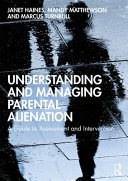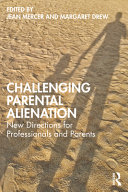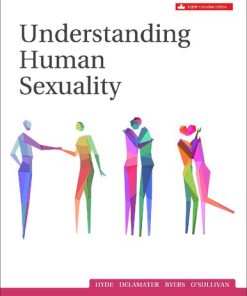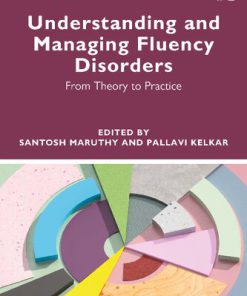Understanding and Managing Parental Alienation 1st Edition by Janet Haines, Mandy Matthewson, Marcus Turnbull 0367312948 9780367312947
$50.00 Original price was: $50.00.$25.00Current price is: $25.00.
Understanding and Managing Parental Alienation 1st Edition by Janet Haines, Mandy Matthewson, Marcus Turnbull – Ebook PDF Instant Download/Delivery: 0367312948, 9780367312947
Full download Understanding and Managing Parental Alienation 1st Edition after payment

Product details:
ISBN 10: 0367312948
ISBN 13: 9780367312947
Author: Janet Haines, Mandy Matthewson, Marcus Turnbull
In Understanding and Managing Parental Alienation: A Guide to Assessment and Intervention, Janet Haines, Mandy Matthewson and Marcus Turnbull offer a comprehensive analysis of contemporary understanding of parental alienation. Grounded in recent scientific advances, this is the first book of its kind providing resources on how to identify parental alienation and a guide to evidence-based intervention. Parental alienation is a process in which one parent manipulates their child to negatively perceive and reject the other parent. Recognising this phenomenon and knowing when to intervene is often the biggest challenge faced by practitioners and this book provides a guide to this process. Divided into six parts, it examines what parental alienation is and how it is caused, how it affects each family member as a mental health concern and form of violence, and how to assess, identify and intervene successfully from a legal and therapy standpoint. Taking on a gender-neutral approach, the book is filled with contemporary case examples from male and female perspectives, cutting-edge research, practitioner-client dialogues, and practitioners’ reflections to show the difficult realities of parental alienation. Practical and accessible, this is an essential resource for mental health professionals working with families experiencing parental alienation, as well as postgraduate students of clinical psychology, counselling, family therapy, social work, and child and family psychology. This book will also be of immense interest to family lawyers and mediators due to its multidisciplinary approach.
Understanding and Managing Parental Alienation 1st Table of contents:
Part One The nature of parental alienation
Chapter One What is parental alienation?
Introduction
Parental alienation
Parents’ behaviour affects children’s wellbeing
Children’s rejection of a parent
Parental alienation and the alienated family
What is parental alienation?
The consequences of parental alienation
Is there something broken in the parent–child relationship?
When does parental alienation occur?
How often does parental alienation occur?
Concluding comments
References
Chapter Two The great syndrome debate
Introduction
Gardner’s parental alienation syndrome
Criticisms of parental alienation syndrome
Inadequate evidence base
Inadequate theoretical foundation
Misinterpretation of a child’s normal reactions
Validity of child sexual abuse allegations
Over-estimation of threat to child of parental alienation
Errors in suggesting the primary cause is the alienating parent
Inappropriate remedies
Parental alienation without the syndrome
Concluding comments
References
Chapter Three Processes underlying parental alienation
Introduction
Psychologically abusive group processes
Isolation
Control and manipulation of behaviour
Control over personal life
Emotional abuse
Indoctrination in an absolute belief system
Imposition of a single and extraordinary authority
Parent–child relationship patterns
Adultification
Parentification
Infantilisation
Concluding comments
References
Chapter Four Parental alienation as a mental disorder
Introduction
Parental alienation as a psychiatric disorder
Criticisms of the notion of a disorder
1. Insufficient evidence base for parental alienation.
2. The label of a mental illness has detrimental effects on the recipient of the diagnosis.
3. Those seeking to classify parental alienation as a mental disorder are driven by needs other than those associated with the greater good.
4. The rejection of Gardner’s parental alienation syndrome.
Other psychological conceptualisations
Who should be diagnosed?
Concluding comments
References
Chapter Five Parental alienation as a form of family violence
Introduction
Theories of family violence: A brief overview
Feminist theory
Family systems theory
Attachment theory
Social learning theory
Psychopathology
What does the law say about family violence?
Is parental alienation family violence against children?
Is parental alienation family violence against targeted parents?
Concluding comments
References
Part Two The alienated family
Chapter Six Alienating parents
Introduction
Categories of alienating parents
Characteristics of alienating parents
Problematic personality traits
Abnormal grief reaction
Externalisation of responsibility
Family of origin
Deflection of attention from own problems
Poor relationship history
Desire for control
Desire for vengeance
Concluding comments
References
Chapter Seven Targeted parents
Introduction
Characteristics of targeted parents
History of passivity, emotional constriction and over-accommodation
Tendency to avoid self-assertion
Potential for distress in response to alienating tactics
Possible willingness to justify alienating parent’s strategies
Withdrawal from high conflict
Rejection of the child in response to the child’s rejection
Inflexible parenting style
Understanding targeted parents’ characteristics
Campaign of degradation of the parent–child relationships
Gradual decrease in time spent with the alienated child
Ongoing sabotage of the parent–child relationship
False accusations of abuse
Involvement of the alienating parents’ extended family
Perceived reasons for the alienation campaign
Consequences of the alienation campaign
Loss of parenting role
Feelings of injustice
Personal costs
Concluding comments
References
Chapter Eight Alienated children
Introduction
Children at risk of alienation
Psychological consequences
Poor self-esteem
Depression
Feelings of guilt and shame
Alcohol and drug use
Relationship consequences
Lack of trust
Subsequent alienation from own children
Partner selection
Relationship breakdowns
Other problems
School-related difficulties
Search for identity
Self-sufficiency failure
Concluding comments
References
Chapter Nine Other family members
Introduction
Other targeted family members
The new partner
Forgotten grandparents
Other family members as alienators
The new partner in crime
Grandparents in arms
How can other family members help?
Concluding comments
References
Chapter Ten Outside forces
Introduction
The legal system as an outside force
Time is of the essence
Family court consultants and single expert witnesses
What can be done?
The role of education systems
Parental alienation in schools
What can be done?
Child protection services
Being seduced by the story or evidence-based opinion
When child protection services is the alienator
What can be done?
Concluding comments
References
Part Three Assessment of parental alienation
Chapter Eleven Assessing alienating parents
Introduction
Identifying alienating parents
Tactics of alienating parents
Tactics associated with the targeted parent
Denigration of the targeted parent
Vilification of the targeted parent
Interference with time spent with the targeted parent
Eradication of the targeted parent from the child’s life
Information gatekeeping
Tactics associated with the alienated child
Interrogation of the alienated child
Damage to the loving connection with the targeted parent
Inappropriate disclosure about the targeted parent
Encouraging child defiance
Tactics associated with the alienating parent
Forcing loyalty to the alienating parent
Encouraging an unhealthy alliance
Emotional manipulation
Utilising outside forces
Concluding comments
References
Chapter Twelve Assessing targeted parents
Introduction
Assessing psychological wellbeing
Assessing suicide risk
Suicide risk factors
Past psychiatric history
Current mental illness
Comorbidity
Family relationship disturbance
Recent suicide of somebody close
Childhood physical/sexual abuse
Unipolar depressive disorder
Hopelessness
Worthlessness
Drug/alcohol abuse/dependence
Impulsivity
Self-injury
Suicidal ideation
Prior suicide attempt
Stressful life events
Social isolation
Suicide risk assessment
Risk of child abuse offending
Perpetrators of physical abuse
Perpetrators of neglect
Perpetrators of sexual abuse
Perpetrators of emotional abuse
Fatal child abuse
Assessing violence risk
Approach to violence risk assessment
Static factors
Dynamic factors
Speculative factors
Risk factors associated with family violence
Concluding comments
References
Chapter Thirteen Assessing alienated children
Introduction
Identifying alienated children
Expression of negative views about the targeted parent
Extreme and opposite views about parents
Situationally determined changes in the child’s behaviour
Denial of positive regard for the targeted parent
Distorted views about the targeted parent
False memories or accounts of events not experienced
Lack of concern about internal inconsistency of information provided
Relating targeted parent’s faults as a litany
Fear response
Dependent or symbiotic relationship with alienating parent
Compliant with adults other than targeted parent
Believes alienating parent persecuted by targeted parent
Lack of empathy for plight of targeted parent
Targeted parent holds no important position
Rigidity of belief system regarding targeted parent
Independent thinker phenomenon
Concluding comments
References
Chapter Fourteen Assessing dysfunctional family interaction patterns
Introduction
Approaching family assessment for intervention purposes
Models of family functioning and attachment
Minuchin and family stress
McMaster model of family functioning
Circumplex model of family cohesion
Attachment theory
Assessment tools
Best practice in family assessment
Concluding comments
References
Part Four The alienated family: A legal perspective
Chapter Fifteen Parental alienation in the courts
Introduction
The nature of parental alienation in the legal system
The size of the problem in family law
Lawyers’ and the courts’ approach to parental alienation cases
Lawyer and client relationship in alienation cases
Involvement of the alienated child in proceedings
The views of the child and parental alienation
Case – Views of the child
Comment
The need for a legal response to parental alienation
The need to resolve parental alienation
Collaboration between law and psychology
The nature of the legal response to parental alienation
Legal responses to parental alienation
Court support for psychological intervention
Court orders for psychological intervention
Case comparison
Case A: Parental alienation
Introduction and background
Legal considerations
Parenting orders
Case B: No parental alienation
Introduction and background
Relevant evidence
Exhibits
Child inclusive conference
The family report
Relevant issues
Parenting orders
Comparison between cases
Concluding comments
References
Chapter Sixteen Parental alienation and parenting dispute evaluations
Introduction
Do no harm
Approach to evaluation
Neutral position
Information gathering
Hypothesis building
Hypothesis testing
Opinion formulation
Approach to interviewing
Interviewing parents
Starting point
Interviewing style
Detection of deceptive responding
Challenge skills
Interviewing children
Starting point
Interviewing style
Detection of deceptive responding
Challenge skills
Interviewing others
Starting point
Interviewing style
Detection of deceptive responding
Challenge skills
Parent–child observations
Organising observations
Conducting observations
Usefulness of observations
Use of collateral information
Information provided in documents
Information from teachers
Information from health professionals
Information from mental health professionals
Police records
Other information
Role of the expert witness
Expert witness
Roles when offering opinions
Court-appointed single expert
Expert for one party
Critiquing the work of others
Advisor
Parenting dispute evaluation issues
Complexity of cases
Lives with/spends time with orders
The notion of meaningful time
Willingness to facilitate contact with the other parent
Shared care
Equal shared parental responsibility
Views expressed by the child
Dispute issues relevant to parental alienation
The role of conflict
Child abuse and family law
Formulating your opinion
Formulating a response
Reconciling opposing accounts
Evidence base for opinion
Remember your audience
Effect of your opinion
Openness to additional information
Cross-examination of opinion
Concluding comments
References
Part Five Intervention with alienated families
Chapter Seventeen The need for intervention
Introduction
To intervene or not to intervene? What does the research say?
What are the intervention options?
The evidence for interventions
Consequences of no intervention
Concluding comments
References
Chapter Eighteen Family therapy and beyond
Introduction
The essential ingredients
Psychoeducation
Critical thinking
Improving the targeted parent–child relationship
Preparing the alienating parent for an improvement in the targeted parent–child relationship
Establish healthy boundaries and communication within the family
Strict visitation schedules
Collaborating for effective outcomes
Ethical dilemmas and pitfalls
Boundaries
Informed consent and signed contractual agreements
Confidentiality in the face of reportable work
Working with multiple clients
Record keeping
When the subpoena comes
Complaints
Self-care
Concluding comments
References
Chapter Nineteen Individual therapy with each family member
Introduction
Working with targeted parents
Knowledge is a double-edged sword
The hard road or the hard road?
Time to grieve
When the targeted parent met cognitive behavioural therapy
Preparing for reunification
A word of caution
Working with alienating parents
There are alliances and then there are alliances
Education
Shifting locus of control
When the alienating parent met dialectical behaviour therapeutic strategies
Risk assessment and a word of caution
Working with children
Beware of an alliance with falsehood
Armour of coping skills
Words of wisdom
Working with adults alienated during childhood
Understanding the confusion
Dealing with trauma
Supporting through reunification
Concluding comments
References
Part Six Identifying parental alienation
Chapter Twenty A decision-making process
Introduction
Characteristics of alienating parents
Problematic personality traits
Abnormal grief reaction
Externalisation of responsibility
Family of origin
Deflection of attention from own problems
Poor relationship history
Desire for control
Desire for vengeance
Alienating tactics by alienating parents
Denigration associated with the targeted parent
Vilification of the targeted parent
Interference with time spent with the targeted parent
Eradication of the targeted parent from the child’s life
Information gatekeeping
Interrogation of the alienated child
Damage to the loving connection with the targeted parent
Inappropriate disclosure about the targeted parent
Encouraging child defiance
Forcing loyalty to the alienating parent
Encouraging an unhealthy alliance
Emotional manipulation
Utilising outside forces
Presentation of the alienated child
Expression of negative views about the targeted parent
Extreme and opposite views about parents
Situationally determined changes in the child’s behaviour
Denial of positive regard for the targeted parent
Distorted views about the targeted parent
False memories or accounts of events not experienced
Lack of concern about internal inconsistency of information provided
A litany of complaints about the targeted parent
Fear response
Dependent or symbiotic relationship with alienating parent
Compliant with adults other than targeted parent
Believes alienating parent persecuted by targeted parent
Lack of empathy for plight of targeted parent
Targeted parent holds no important position in child’s life
Rigidity of belief system regarding targeted parent
Independent thinker phenomenon
Characteristics of targeted parents
History of passivity, emotional constriction and over-accommodation
Tendency to avoid self-assertion
Potential for distress in response to alienating tactics
Possible willingness to justify alienating parent’s strategies
Withdrawal from high conflict
Rejection of the child in response to the child’s rejection
Inflexible parenting style
Consequences of alienation campaign for targeted parents
Loss of parenting role
Feelings of injustice
Personal costs
Degradation of the parent–child relationship
Escalation of parental alienation
Gradual decrease in time spent with alienated child
Dysfunctional family interaction patterns
Family stress
Inability to achieve family tasks
Lack of cohesion and flexibility
Insecure attachment styles
Concluding comments
Chapter Twenty-One Where to from here?
Introduction
Future directions
The nature of parental alienation
Alienated family members
Assessment
Intervention
Collaboration of psychology and the legal system
Concluding comments
People also search for Understanding and Managing Parental Alienation 1st:
understanding parental alienation
un parental alienation
8 behaviors of alienated child
8 behavioral manifestations of parental alienation syndrome
Tags:
Janet Haines,Mandy Matthewson Marcus Turnbull,Understanding
You may also like…
Uncategorized
Relationships & Lifestyle - Families & Parents
Psychology - Clinical Psychology
Parental Alienation An Evidence Based Approach 1st Edition Denise Mccartan
Medicine - Diseases
Crohn s and Colitis Understanding Managing IBD Hillary Steinhart
Erotica - Others
Erotica - Others
Understanding Human Sexuality, 15th 15th Edition Janet Shibley Hyde
Relationships & Lifestyle - Health - Diseases & Disorders
Understanding and Managing Fluency Disorders: From Theory to Practice 1st Edition Santosh Maruthy
Business & Economics - Management & Leadership
Politics & Philosophy - Warfare & Defence
Understanding Hypersonic Weapons Managing the Allure and the Risks Shannon Bugos











